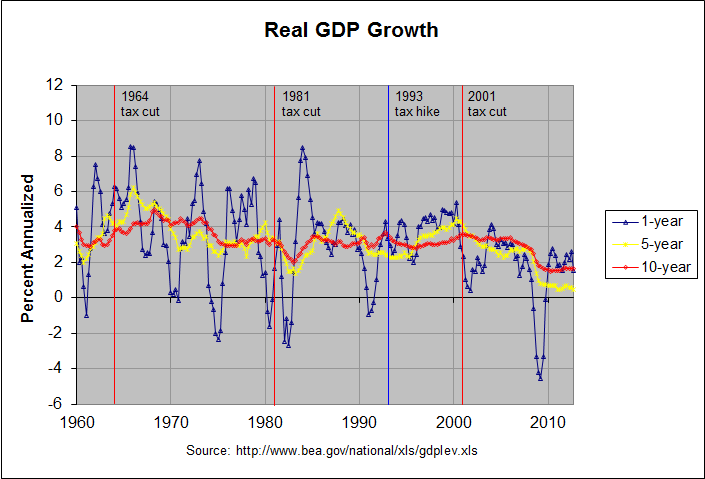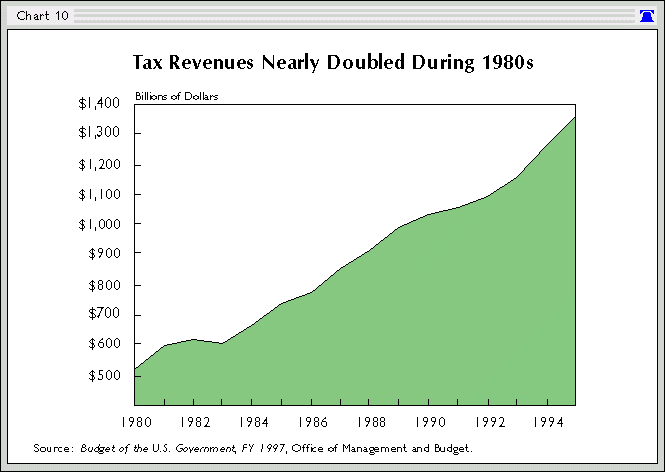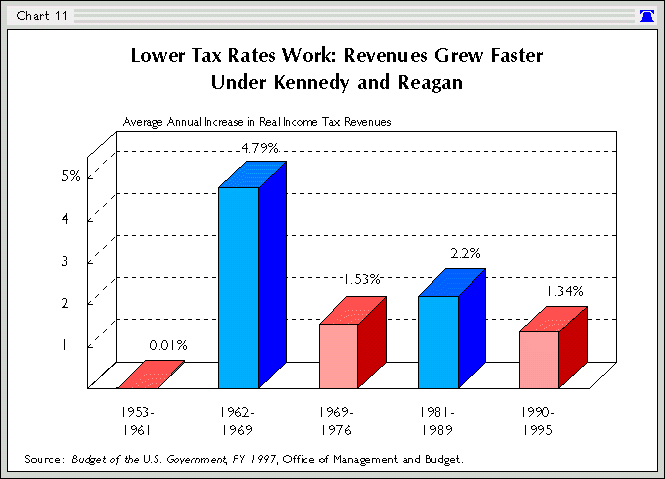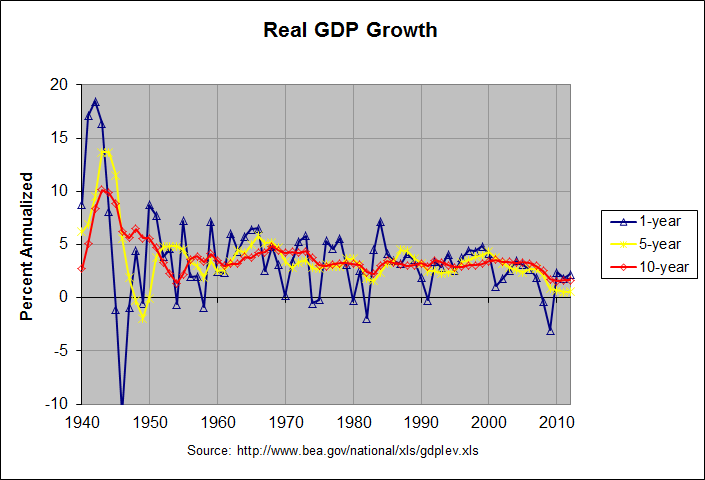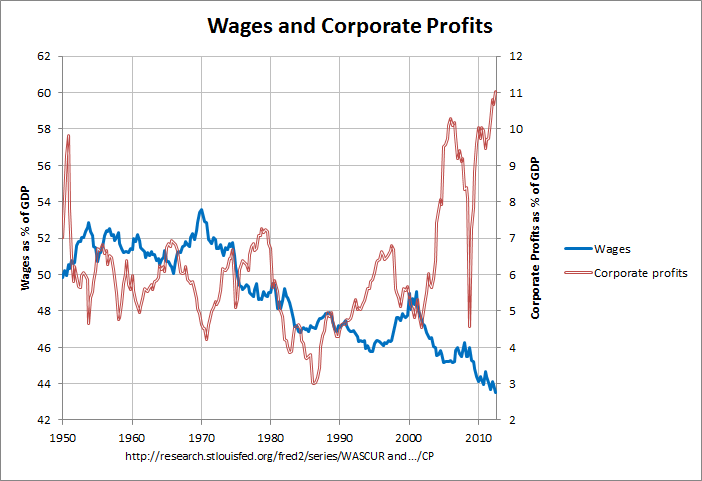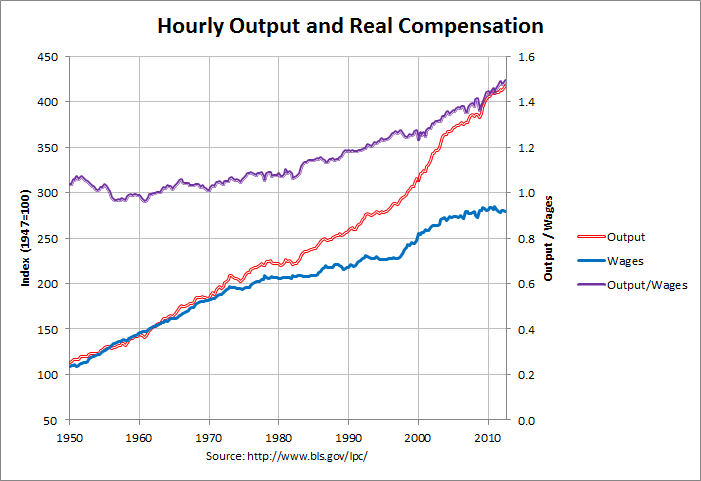As the government shutdown continues, the nation gets closer and closer to the day—probably Oct. 17—when Washington hits the debt limit, and with it the specter of default. President Obama may be getting nervous about what will happen to his negotiating position as that day approaches.
He keeps asserting that the debt limit has never been used "to extort a president or a government party." Treasury Secretary Jack Lew is selling the same story, saying "until very recently, Congress typically raised the debt ceiling on a routine basis . . . the threat of default was not a bargaining chip in the negotiations."
The editorial goes on to say that this is "simply untrue" and describes "the shenanigans of congressional Democrats in 1989 over Medicare's catastrophic health coverage provision":
In this case, the problem was political infighting within the Democratic Party between the House and the Senate. "Weeks of political maneuvering brought the government to the brink of financial default," the New York Times wrote on Nov. 8 of that year.
The New York Times article being referred to appears to be one titled "Agreement On Raising Debt Ceiling". It begins:
After weeks of political maneuvering that brought the Government to the brink of financial default, Congress tonight approved legislation raising the national debt limit to $3.12 trillion through Sept. 30, 1990.
The article does state that the bill "also paves the way for Congressional approval of separate legislation modifying the Medicare insurance program that covers the catastrophic costs of major illness", the issue mentioned by the Journal editorial. However, it goes on to describe the final holdup to the bill's passage:
At one point, the Senate majority leader, George J. Mitchell of Maine, stormed off the floor, saying he was going to telephone President Bush and Treasury Secretary Nicholas F. Brady and inform them that the bill could not be passed because a single Republican senator, John Heinz of Pennsylvania, had refused to give his consent to proceed.
Leaders in the House and Senate had agreed earlier in the day to approve the bill with only one amendment - a measure repealing 1986 tax rules that bar discrimination in employer-paid health insurance plans. Link to Social Security
But as Mr. Mitchell rose to explain that agreement and move toward a vote, Mr. Heinz objected, saying he would not allow the vote unless the Senate also agreed to consider an amendment to remove the Social Security trust fund surplus from calculation of the Federal deficit.
The article then describes the resolution to this holdup and concludes as follows:
Congressional delays in approving debt limit measures have become routine over the last decade as lawmakers scramble to attach pet initiatives to what they know is must-pass legislation. But the situation this year was particularly complicated because the debt limit bill became entangled in the fierce battles over budget legislation and efforts to cut the capital gains tax.
Republicans agreed last week to abandon their attempts to attach a capital gains tax cut to the debt limit bill, a measure they had regarded as their best hope for winning the votes needed to pass a tax cut this year.
Hence, a Republican Senator played a key role in the final holdup and Republicans had attempted to attach a capital gains tax cut to the bill. For some reason, the editorial did not see fit to report anything except the "shenanigans of congressional Democrats".
In any case, the Journal editorial goes on to state:
One thing is certain: The debt limit has been a powerful negotiating tool in the last several decades. It has enabled the passage of important additional legislation.
According to the Congressional Research Service, Congress voted 53 times from 1978 to 2013 to change the debt ceiling. The debt ceiling has increased to about $16 trillion from $752 billion.
Further on, the editorial states:
Congressional Republicans who want legislative conditions in exchange for a debt-limit increase are following a strategy that has been pursued by both parties the majority of the time. Of the 53 increases in the debt limit, 26 were "clean"—that is, stand-alone, no strings-attached statutes. The remaining debt-limit increases were part of an omnibus package of other legislative bills or a continuing resolution. Other times, the limit was paired with reforms, only some of which were related to the budget.
This statistic has been mentioned recently by a number of people. On the October 6th "This Week With George Stephanopoulos", Paul Gigot, editor of the editorial pages for The Wall Street Journal, stated:
"There have been 53 debt limit increases since 1978, and 27 of those were not clean. They were not just raise the debt limit. They included reforms. Often important, budget reforms."
Following is a longer discussion of the statistic from "Fox News Sunday" on the same day:
OBAMA: You have never seen in the history of the United States the debt ceiling or the threat of not raising the debt ceiling being used to extort a president or a governing party and trying to force issues that have nothing to do with the budget and have nothing to do with the debt.
(END VIDEO CLIP)
WALLACE: But, Mr. Secretary, that is just not true. Congress has voted to raise the debt ceiling 53 times since 1978. More than half -- 27 times -- it's been linked to something else. And among those items it's been linked to: campaign finance reform, school prayer and busing and a nuclear freeze.
What's unprecedented is not Congress tying strings. What's unprecedented is the president refusing to negotiate.
LEW: You know, Chris, let me be clear. The president has always been looking for a way to negotiate, find that reasonable middle ground with a bipartisan, you know, group of members and senators to do the right thing for the American people. He was -- he has -- he put out a budget that actually took an enormous step to do that.
So the president is open to negotiation. The question about the debt limit is different.
And, frankly, I think your history is wrong. If you look at the cases where the debt limit was involved, there were many other things attached to the debt limit, but the question of threatening to cause a default of the United States, not until 2011 did it become a positive agenda.
WALLACE: Mr. Secretary, your history -- with all due respect, your history is wrong.
So let's look at the Congressional Research Service study from which this statistic comes. It appears to have come from a study titled "Votes on Measures to Adjust the Statutory Debt Limit, 1978 to Present, released February 15, 2013. In its Summary, the study does state the following:
Since 1978, the statutory federal debt limit has been changed 53 times by Congress through the enactment of legislation adjusting the federal debt limit, either as stand-alone legislation or as part of legislation dealing with other matters.
The study contains three tables. Table 1 lists information on all 53 debt limit measures since 1978. Table 2 identifies 26 stand-alone measures from these 53. Table 3 then lists the other 27 bills considered as other than stand-alone measures and provides brief background information on the nature of each measure and by what means it was considered. The following table gives some of the key items from Table 1 for the 27 non-stand-alone measures:
OTHER THAN STAND-ALONE DEBT LIMIT MEASURES
House Vote Senate Vote Public Law Debt
---------------- ---------------- Date of Limit
Year Bill Number Tally Margin Tally Margin Enactment ($ bil)
---- ------------ -------- ------ -------- ------ ---------- ------
1979 H.R. 2534 209-165 44 62-33 29 4/2/1979 830*
H.R. 5369 219-198 21 49-29 20 9/29/1979 879*
1980 H.R. 7428 335-34 301 68-10 58 6/6/1980 n.c.
1983 H.R. 2990 Voice Vote 51-41 10 5/26/1983 1389*
1984 H.R. 5692 211-198 13 Voice Vote 5/25/1984 1520*
1985 H.R. 3721 300-121 179 Voice Vote 11/14/1985 1903.8
H.J.Res. 372 271-154 117 61-31 30 12/12/1985 2078.7
1986 H.R. 5300 305-70 235 61-25 36 10/21/1986 2300
1987 H.J.Res. 324 230-176 54 64-34 30 9/29/1987 2800*
1989 H.R. 3024 231-185 46 Voice Vote 8/7/1989 2870*
H.J.Res. 280 269-99 170 Voice Vote 11/8/1989 3122.7
1990 H.J.Res. 666 362-3 359 Voice Vote 10/9/1990 n.c.
H.J.Res. 677 379-37 342 Voice Vote 10/19/1990 n.c.
H.J.Res. 681 380-45 335 Unanimous Consent 10/25/1990 n.c.
H.J.Res. 687 283-49 234 Voice Vote 10/28/1990 3230
H.R. 5835 228-200 28 54-45 9 11/5/1990 4145*
1993 H.R. 2264 218-216 2 51-50 1 8/10/1993 4900*
1996 H.R. 2924 396-0 396 Unanimous Consent 2/8/1996
H.R. 3021 362-51 311 Voice Vote 3/12/1996
H.R. 3136 328-91 237 Unanimous Consent 3/29/1996 5500
1997 H.R. 2015 346-85 261 85-15 70 8/5/1997 5950
2008 H.R. 3221 272-152 120 72-13 59 7/30/2008 10615
H.R. 1424 263-171 92 74-25 49 10/3/2008 11315*
2009 H.R. 1 246-183-1 63 60-38 22 2/17/2009 12104*
2010 H.J.Res. 45 233-187 46 60-39 21 2/12/2010 14294*
2011 S. 365 269-161 108 74-26 48 8/2/2011 16394
2013 H.R. 325 285-144 141 64-34 30 2/4/2013
* measures with a final vote margin of less than 100 in the House or less
than 30 in the Senate
Note: n.c. = no change
Source: "Votes on Measures to Adjust the Statutory Debt Limit, 1978 to Present
A number of interesting facts are evident from this table. First of all, it doesn't appear that all of these 27 cases are independent. For example, there are 5 cases in less than a month, from 10/9/1990 through 11/5/1990. The first 3 of these cases involve no raise in the debt limit. Perhaps more interesting, the majority of these votes do not appear to be heavily contentious. Only 11 of the 27 measures resulted in a final vote margin of less than 100 in the House or less than 30 in the Senate.
The following table contains notes from Table 3 on the 27 non-stand-alone measures:
OTHER THAN STAND-ALONE DEBT LIMIT MEASURES
Year Notes on the Measure
---- --------------------
1979 required Congress & President present balanced budgets for 81 and 82
made increase in debt limit part of budget process (in the House)
1980 included a repeal of the Presidentially imposed oil import fee
1983 included making the whole debt limit permanent
1984 included some miscellaneous admin authority to Treasury Secretary
1985 extended for a month some expiring acts, including a cigarette tax
required report on legislation for alternative minimum corporate tax
1986 required the restoration of lost interest to certain trust funds
1987 used as legislative vehicle for the Balanced Budget ... Act of 1987
1989 included change in method of accounting for federal debt instruments
repealed nondiscrimination rules that deal w/ employee benefit plans
1990 change in Debt Limit included in a continuing appropriations measure
change in Debt Limit included in a continuing resolution
change in Debt Limit included in a continuing resolution
change in Debt Limit included in a continuing resolution
change in Debt Limit included in Omnibus Budget Recon. Act of 1990
1993 change in Debt Limit included in Omnibus Budget Recon. Act of 1993
1996 temporarily exempted from limit monthly insurance benefits to SSA
temporarily exempted from limit monthly insurance benefits to SSA
included an increase in the debt limit in Title III
1997 included a debt limit increase in Title V, Subtitle G
2008 included an increase to the debt limit
included an increase to the debt limit
2009 included an increase to the debt limit
2010 included provisions for “Statutory PAYGO” and “wasteful spending”
2011 included provisions aimed at deficit reduction
2013 required hold on Member salary if no budget resolution by April 15
Source: "Votes on Measures to Adjust the Statutory Debt Limit, 1978 to Present
These are of course very abbreviated notes on the measures. Still, they suggest that most of the additional items in the measure were not very major. I saw no mention of the issues that Wallace mentioned above (campaign finance reform, school prayer and busing and a nuclear freeze). Also, it appears that some of the debt limit increases may have been included with other bills (such as continuing resolutions) simply for convenience. At the very least, more study would be required for these cases. Simply treating all non-stand-alone measures the same does not make sense. Hence, it may be correct that, as Secretary Lew suggested above, "the question of threatening to cause a default of the United States, not until 2011 did it become a positive agenda".
On Friday, Warren Buffett was quoted as saying the following about the debt ceiling:
It ought to be banned as a weapon. It should be like nuclear bombs, I mean, basically too horrible to use.”
In fact, according to this article, only one democratic country, besides America, has a debt ceiling. That country is Denmark but the article states that they "set the ceiling high enough so that it never slows the process of borrowing money and they can avoid political conflicts like the one currently gripping the U.S.". The article continues:
Barry Bosworth, a senior fellow at the Brookings Institute, said the U.S. debt ceiling “has no logical basis.”
Congress, through budget and appropriations bills, has sole authority to decide how much the government will spend, so he said “it makes no sense to have a secondary rule to then object to the deficit that emerges from the other decisions.”
At the very least, we could legislate that the debt ceiling must always be addressed in a stand-alone measure. Meanwhile, those who distort history to defend such threats, as do the authors of the Journal editorial, should be challenged.
Note: On a related issue, this article explains why government shutdowns only seem to occur in America.

